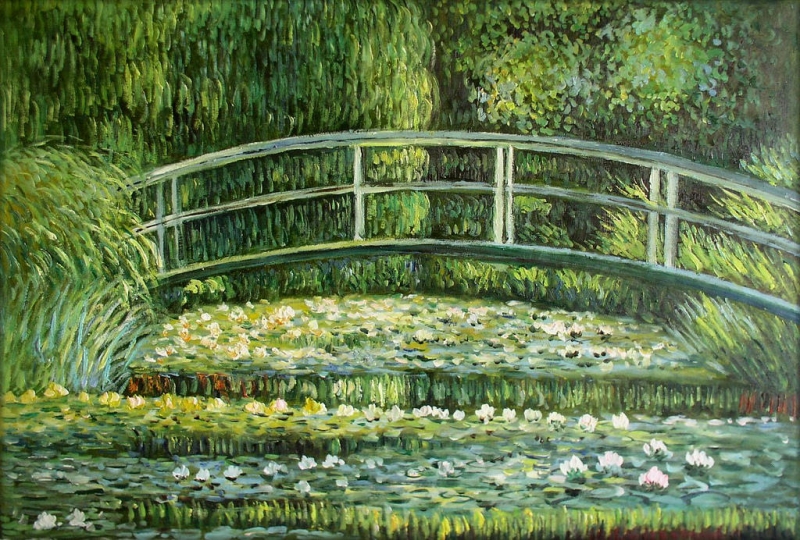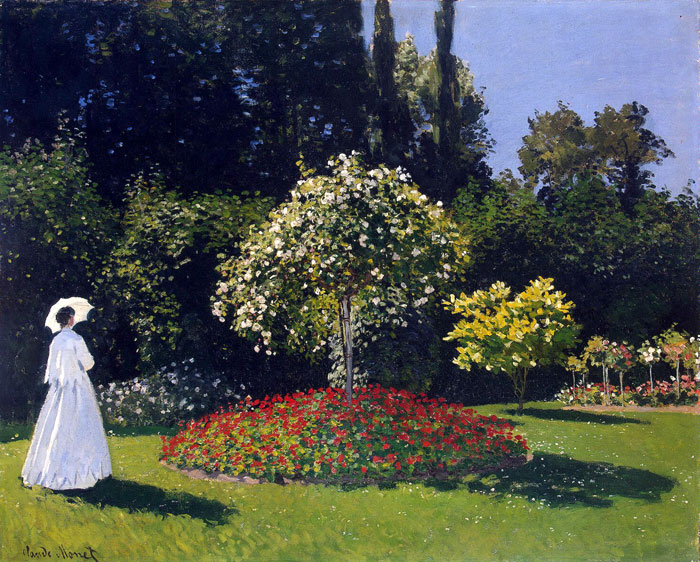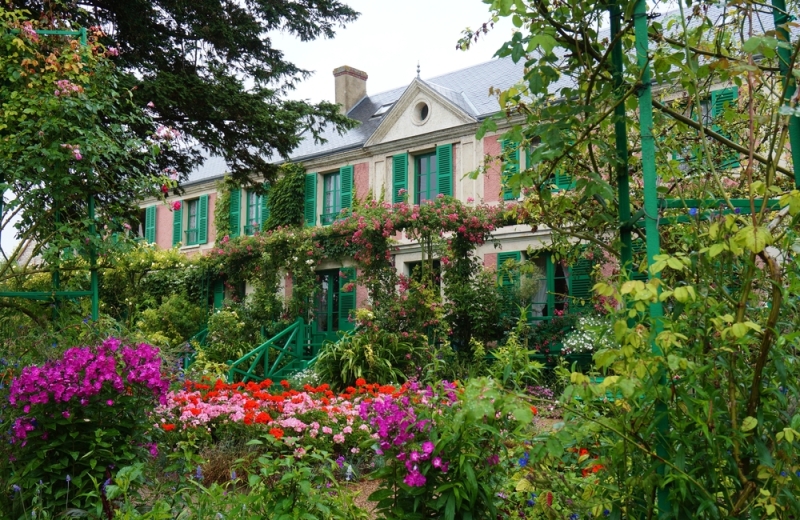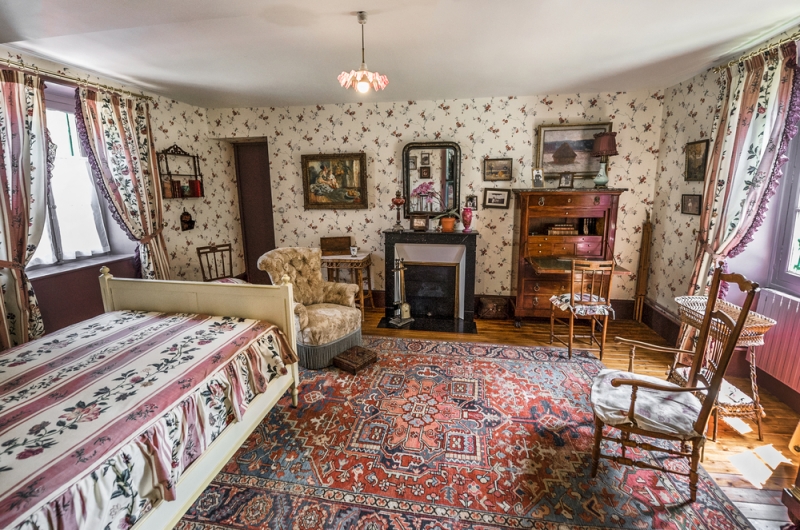
Prestel publishing house published “The Monet Cookbook: Recipes from Giverny” – a collection with 60 original dishes of the impressionist Claude Monet and reproductions of his paintings. Each chapter of the book contains recipes for dishes served at different times in Monet’s famous yellow dining room and in the garden of his home in Giverny. The publishing house emphasizes that the artist did not cook himself, but his diary entries with descriptions of meals, guest lists and recipes have been preserved. From simple galettes and casseroles to exquisite soufflés, seafood dishes and cakes.

“Lady in the Garden”, 1866
The village of Giverny, located 80 kilometers from Paris at the confluence of the Seine and the Epte, would forever remain a picturesque but unremarkable place if one day Claude Monet had not looked out of the train window in time. It was April 1883, the gardens were blooming. And, they say, the artist was so struck by the beauty of this place that he decided to settle here. Monet first rented and in 1890 bought a two-story brick house with a garden of 1 hectare in Giverny. The house is expanded, the size of the windows is increased, the facade is painted pink, and the shutters are green; begins to arrange a magnificent flowering garden. And after another three years he decides to purchase an additional plot. Applying to the local prefecture for the appropriate permission, Monet writes that this is necessary “for the sake of a feast for the eyes and motives for painting.” Having received permission, the artist creates a pond here with water lilies grown from seeds brought from Japan – Monet has a great love for Japanese art.

The mansion where Claude Monet lived in Giverny
By this time Mona is 43 years old. He is a recognized master of painting, his paintings sell well, he is quite rich and surrounded by family, friends, and colleagues. Renoir, Pissarro, Cezanne, Matisse visited here. In Giverny he will live happily until the end of his days – another 43 years, that is, half his life. And almost everything he writes during this time will be inspired by the beauty of these places – the garden and pond with water lilies in Giverny will become the main source of inspiration and the main object of creativity.
After the artist’s death, the estate became the property of the Academy of Fine Arts, which carefully maintained the appearance of the house and garden in the form in which the owner left them, turning this place into the House-Museum of the great impressionist (Musée Claude Monet). It’s worth mentioning that you won’t find Monet’s works inside—it’s better to go to the Orsay and Marmottan museums in Paris for paintings; the second has the most extensive collection of works by Claude Monet in the world. But the house in Giverny is filled with everyday details of the master’s life; the hall has been turned into the “Water Lily” studio, decorated with reproductions of the artist’s works; here the rooms are flooded with light, and the view from the windows is decorated with blooming wisteria, lavender and rhododendrons.

One of the rooms in Claude Monet’s mansion
Following Monet, other artists began to come to Giverny. Gradually, an entire artistic colony of Germans, Czechs, and Englishmen formed here. But most of all there were Americans. The only hotel in the village at that time received the secret name “House of American Artists.” It was the first hotel in the world designed for painting – two studios with huge windows facing north were equipped under the roof. At that time this hotel belonged to Madame Angelina Bodie. Poor guests often paid her with their sketches and paintings – these paintings formed the basis of the collection of the local Impressionist Museum (Musée des impressionnismes Giverny). The museum is located on the main street of Giverny, now named after Claude Monet. By the way,
Hotel Baudy is still in operation. It accepts guests in “bed&breakfast” mode.
If you go further along Claude Monet Street, you can reach the Church of Sainte-Radegonde, in the parish cemetery of which the great artist and members of his family are buried.
Monet’s garden, his house museum and the Impressionist Museum are open to the public. You can get here from Paris by train from Saint-Lazare Station to Vernon Station (travel time 45 minutes). There is a bus from the station to Giverny (distance 7 kilometers), waiting for passengers within 15 minutes after the train arrives.

